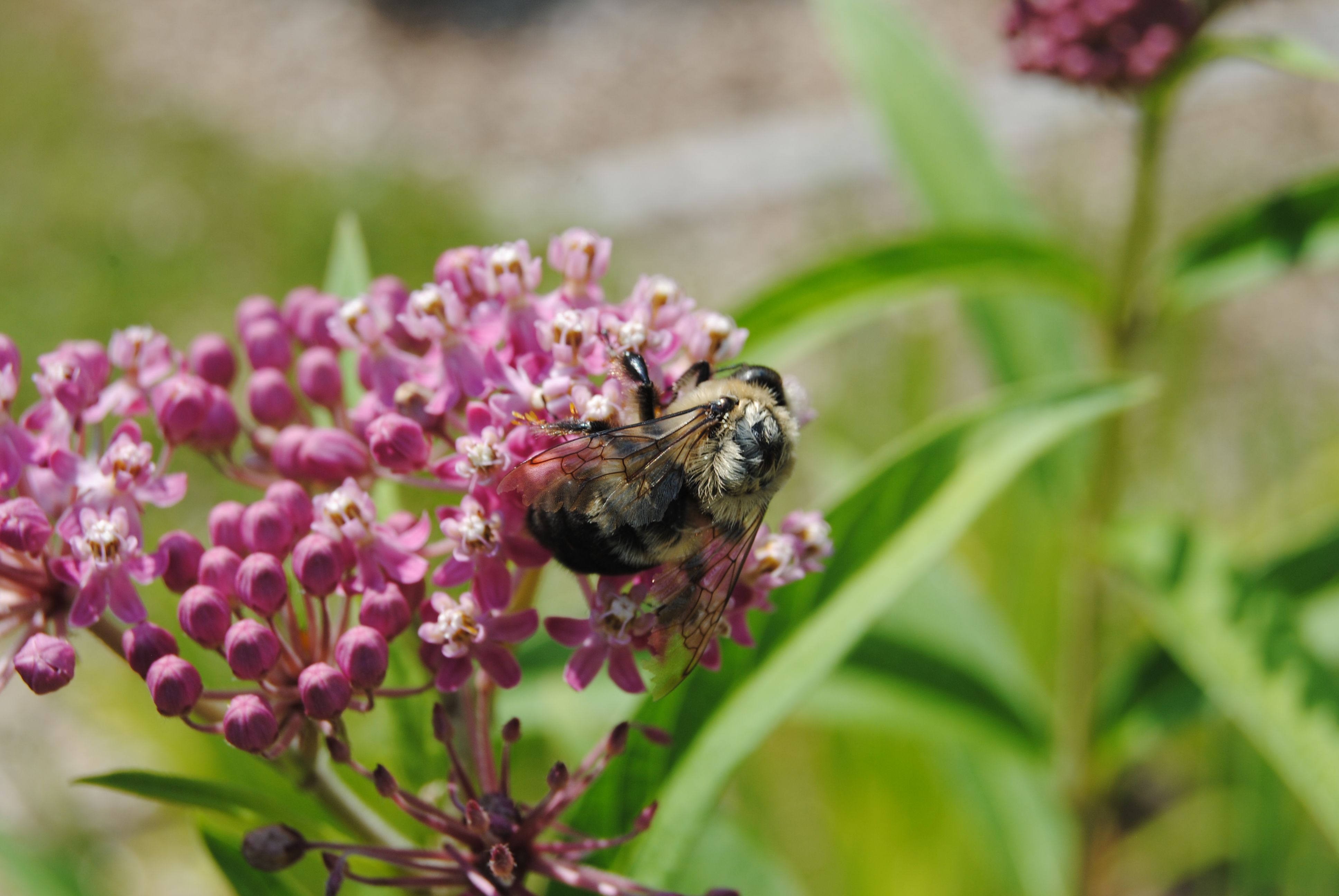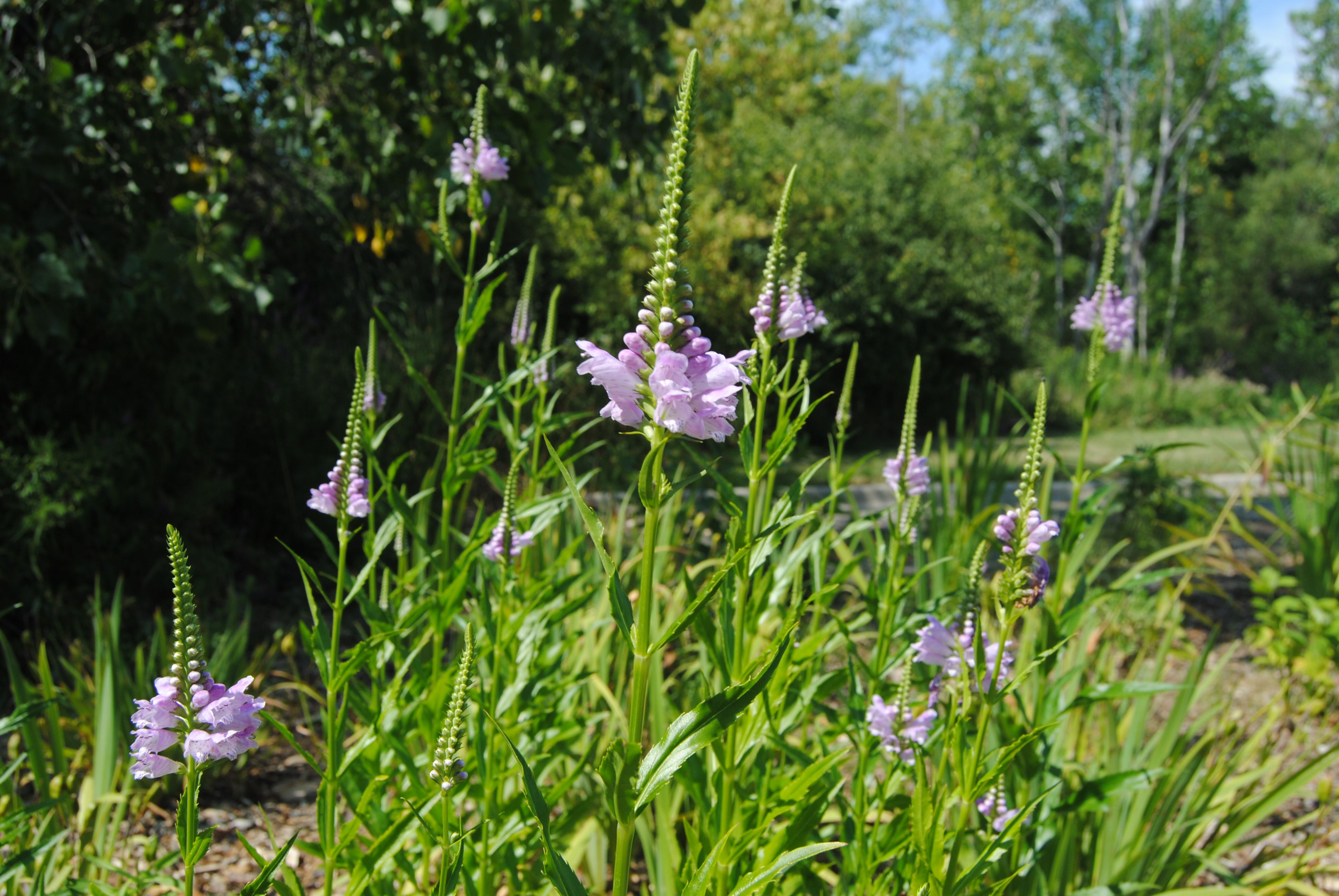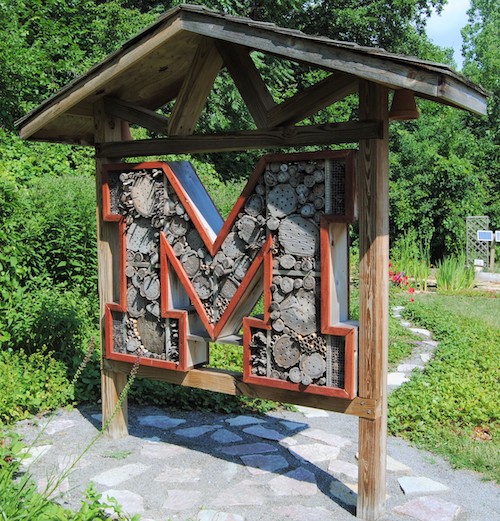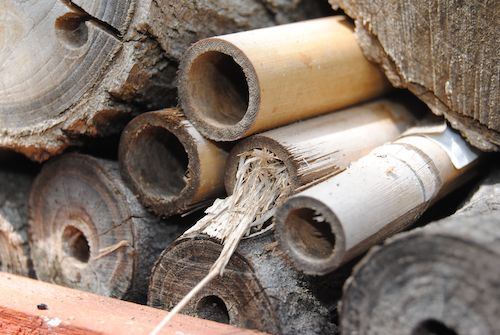Pollinator Garden
Situated along the Rouge River Gateway Trail just to the north of the Environmental Interpretive Center is the Pollinator Garden. This garden originated in 2013 when UM-Dearborn student Mary Fastiggi received seed money via an Ed Bagale Difference Maker Award to build a garden specifically designed to attract butterflies and a variety of other pollinators to campus.
Helping Native Pollinators

Insects and invertebrates, such as bees, butterflies, ladybugs, centipedes, and wasps, perform many essential ecosystem service functions, such as pollinating many of our flowers and crops, or controlling unwanted pest species.
Unfortunately, many of these beneficial insects, especially pollinators, have been experiencing population declines as a result of a myriad of factors, including climate change, parasite and disease infestations, exposure to harmful chemicals and pesticides, and shrinking habitat availability.
In the past few years, more attention has been given to the perilous state of beneficial insects in North America, and increasingly greater efforts are being made to educate the public about the importance of maintaining and improving the long-term sustainability of populations of native pollinators, and native plant-pollinator connections and interactions in landscapes in urban areas.
Native Plants
 Native perennial plant species were chosen based on a number of factors, including their importance as nectar sources, and/or as host plants for egg laying and rearing larvae, sensory engagement, and aesthetic value. Volunteers were recruited for several action days to help clear brush, establish the general garden layout, install weed control fabric, transplant plugs, and spread mulch.
Native perennial plant species were chosen based on a number of factors, including their importance as nectar sources, and/or as host plants for egg laying and rearing larvae, sensory engagement, and aesthetic value. Volunteers were recruited for several action days to help clear brush, establish the general garden layout, install weed control fabric, transplant plugs, and spread mulch.
Go Blue! Insect Hotel
 Situated along the Rouge River Gateway Trail in the Environmental Interpretive Center’s Pollinator Garden is a block- M like no other on the campus of the University of Michigan-Dearborn. The Go Blue! Insect Hotel was created from natural materials to provide shelter and nesting sites for beneficial garden insects and invertebrates including:
Situated along the Rouge River Gateway Trail in the Environmental Interpretive Center’s Pollinator Garden is a block- M like no other on the campus of the University of Michigan-Dearborn. The Go Blue! Insect Hotel was created from natural materials to provide shelter and nesting sites for beneficial garden insects and invertebrates including:
- beetles
- solitary bees
- centipedes and millipedes
- thread-waist wasps
- lacewings
- spiders
- and wood lice.
Building materials include logs,  bark, dried sticks, bamboo, spruce and pine cones. These provide ‘homes’ for wildlife.
bark, dried sticks, bamboo, spruce and pine cones. These provide ‘homes’ for wildlife.
For example, holes of specific known dimensions were drilled in the logs to provide spaces where organisms like leaf-cutter and mason bees could lay their eggs and provision them with food. The bees would then close up these chambers with soil, leaves, etc., so the eggs could safely develop into larvae, and, ultimately, adults.
Community Outreach
The garden has been used for community outreach in the Pollination Partnership Program, as well as for hands-on, sensory gardening experiences for the Center’s Birding by Ear Program for blind and visually-impaired youth.
